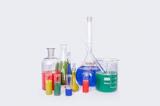Procedures for Detection and Quantitation
Federal Advisory Committee Report
EPA convened a Federal Advisory Committee on Detection and Quantitation (FACDQ) in June 2005 to provide advice and recommendations on approaches for the development of detection and quantitation procedures and uses of these procedures in CWA programs. The Committee concluded its business on December 21, 2007, and submitted its report to the EPA Administrator.
This report provides advice and recommendations for the development of an improved procedure for determining detection and quantitation limits, and use of these limits in NPDES permit reporting and compliance determinations. The Committee deliberated for two and half years on challenging policy and technical issues related to detection and quantitation limits, particularly in those situations where water quality-based effluent limits are below analytical method detection capabilities.
Laboratory Study On Detection and Quantitation Procedures
- Laboratory Study of Procedures Evaluated by the Federal Advisory Committee on Detection and Quantitation Approaches and Uses in Clean Water Act Programs (2011)
- Supplement to Report (2011)
This report describes a laboratory study that EPA conducted to evaluate procedures recommended by the FACDQ. The committee procedures describe an approach and set of steps for calculating detection limits (DLs) and quantitation limits (QLs) for two different types of methods. In this study, EPA tested the two versions of the FACDQ procedure and another quantitation procedure that the Committee evaluated, the lowest concentration minimum reporting level (LCMRL). These procedures were tested in 2009 on two analytical methods in three laboratories each. The report from this study includes a statistical analysis of the analytical data and provides a detailed discussion of how the study results compare to the four measurement quality objectives (MQOs) established for this study. Based on the study results, EPA concluded that none of the procedures tested consistently generated accurate estimates of the lowest concentration at which the study MQOs were achieved. Further, none of the procedures achieved all the desired characteristics of a procedure, as defined by the FACDQ.
To gauge how the approaches evaluated in the study compare to EPA’s current approach for detection and quantitation, the Agency also conducted an analysis of method detection limit (MDL) data and calculated minimum level of quantitation (ML) data that had been collected as part of the laboratory qualification process for the study. These MDL data came from the same three laboratories on the same two analytical methods. EPA subjected these results to the same analysis as described above using the same MQOs. The most notable outcome of the MDL data analysis was the high rate of false positives for both methods. In both cases, the false positive rate for the MDL was above the desired 1 percent positive rate and the acceptable maximum 3 percent false positive rate agreed upon by the Federal Advisory Committee. The ML analysis results for the other three MQOs were closer to those obtained for the FACDQ approach although the FACDQ QL produced slightly better results than the ML.
Based on this comparison of the statistical analysis of the results from the FACDQ and the MDL/ML procedures for these two methods, the FACDQ procedures may offer an improvement over the MDL/ML procedures as they met the MQOs more often than the MDL/ML. However, because the FACDQ procedure was analyzed for only two methods, EPA is not prepared at this time to adopt the FACDQ procedure for broad application in Clean Water Act programs, and believes more development and testing of the FACDQ procedure is warranted. EPA is interested in obtaining data on these approaches as applied to additional analytical methods and at more laboratories to further assess the performance of the procedures for different types of analytical methods. EPA strongly encourages interested parties to conduct additional studies of these procedures and submit the study results to EPA for review. The Agency welcomes interested parties to share their study plans with us prior to such studies to maximize the usability of the resultant data in Clean Water Act programs. EPA will revisit this issue when and if new data provides greater support for the adoption of a new procedure.

